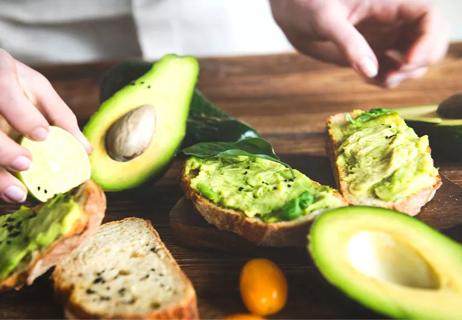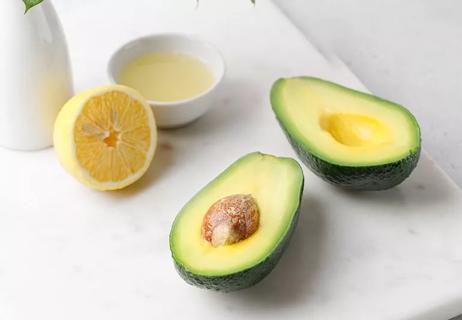With a sweet, tangy flavor, tamarind is super versatile and high in antioxidants

Around the world, tamarind fruit is a key ingredient in popular and culturally significant dishes both savory and sweet. But it comes from a tree that can only survive in tropical and subtropical climates, so depending on where you live, you may not be as familiar with it as you are with other fruits.
Advertisement
Cleveland Clinic is a non-profit academic medical center. Advertising on our site helps support our mission. We do not endorse non-Cleveland Clinic products or services. Policy
Registered dietitian Devon Peart, RD, MHSc, explains what tamarind is and what health benefits it may provide so you can start incorporating this versatile fruit into your diet.
Tamarind fruit is a pod-like legume that comes from the tamarind tree (Tamarindus indica). On the outside is a hard shell that looks like an elongated peanut shell or a brown edamame (soybean) pod. But inside is a fleshy pulp with a texture similar to dates.
“Tamarind is both sweet and tangy,” Peart says. “It’s sweeter or sourer depending on how ripe it is. The riper the fruit, the sweeter the taste.”
Though tamarind trees are native to tropical areas of Africa, they now grow in other warm climates, too, including South Asia, Mexico and parts of Central America.
It’s one of the key ingredients in sinigang, a savory Filipino stew, and imli or saunth chutney, a sweet chutney that complements fried snacks in India and Pakistan. It’s also used in beverages like agua fresca, which abounds in Mexico and parts of Latin America, and sharbat, a chilled cordial often served during Ramadan.
Tamarind is sold in a few forms, depending on how you want to use it. “If you want to eat it raw, you can just break open the pod and eat the pulp from around the seed,” Peart explains. (The pods themselves are inedible, but they’re compostable!)
Advertisement
You can also make your own tamarind paste by boiling and straining the pulp, which can be used as a dip or added to other dishes. “To make a paste in its pure form, the only thing added to tamarind is water,” Peart says, “so it’s as nutrient-rich as the raw plant.”
Sound like too much work for you? If you want to use tamarind as an ingredient in cooking, you can also buy it in various forms, like:
Just be sure to steer clear of any variety made with added sugar. “If you buy ready-made paste or concentrate, other ingredients may be added,” Peart warns, “so check the ingredient label.”
You already know that fruit is healthy. But what’s so great about tamarind, in particular?
“Tamarind is rich in antioxidants and high in calcium, fiber and magnesium,” Peart says. Here’s a look at what that means for you and some of the potential and proven health benefits of tamarind.
Antioxidants are naturally occurring chemicals found in some foods. They help your body fight cellular damage from free radicals, unstable molecules that cause oxidative stress and can lead to signs of aging and disease, including:
But antioxidants pair up with free radicals and prevent them from going rogue inside your body. That means they have big overall benefits for your health — and tamarind is full of them. It’s especially high in an antioxidant called beta-carotene, which supports eye health.
One serving of tamarind offers more than 25% of your recommended daily amount of magnesium.
This important nutrient supports more than 300 essential processes in your body, including regulating nerve and muscle function, maintaining blood pressure control and maintaining strong bones.
Inflammation in the body is associated with all sorts of risks, including injury, illness and chronic diseases. But reducing inflammation also reduces your risks — and your diet can go a long way.
“Tamarind pulp is rich in potassium and polyphenols, like flavonoids, which reduce inflammation,” Peart says. Flavonoids are natural plant chemicals with antioxidant properties, and antioxidants are one of the key fighters against inflammation.
That doesn’t mean that tamarind alone will be the superhero you need to combat inflammation. But it can definitely help.
Advertisement
Tamarind seeds, in particular, may play a role in helping manage and treat obesity.
“Obesity triggers metabolic and hormonal changes related to low-grade, chronic inflammation,” Peart explains, “but tamarind is a powerful anti-inflammatory that contains trypsin inhibitor, a molecule involved in hunger and satiety hormones that can essentially lead to a feeling of fullness.”
More studies are needed to determine exactly how and whether trypsin inhibitors have a role to play in obesity treatment, but some of the evidence is promising so far.
The glycemic index classifies foods that contain carbohydrates based on how likely they are to raise your blood sugar.
Foods that are low on the glycemic index are less likely to cause your blood sugar to rise quickly, making them a good choice for your diet. This is especially important if you have diabetes — and tamarind may be one of those foods. Currently, there’s limited evidence of this possible benefit, but research is ongoing.
“Tamarind is relatively high in sugar, at 34 grams per half cup,” Peart notes, “but it’s also low on the glycemic index, meaning it doesn’t cause spikes in blood sugar. Its potential role in diabetes management is still being sorted out.”
Advertisement
Tamarind’s nutritional profile makes it clear that it can be a healthy addition to your diet. So, if you’re ready to get snacking or to start cooking, consider this your all-clear to give it a go.
“Tamarind is nutrient-rich, so, on balance, it’s a healthy food when you enjoy it in moderation,” Peart says. “Just stick to one serving at a time, which is half a cup.”
Advertisement
Learn more about our editorial process.
Advertisement

They’re great for your gut, heart and blood sugar and may lower inflammation

This glorious green superfood is full of vitamins, minerals and lots of other good stuff

An apple a day may reduce high blood pressure, lower cholesterol and help you live longer

From managing blood sugar to lowering cholesterol, this fruit is a jack-of-all-trades

A mango a day may help keep hunger and bloating away

From improving gut health to helping with childbirth, dates are a nutritional powerhouse

Jujube is nutritionally dense, but research is limited

Warning: A popular TikTok hack to extend the life of avocados could lead to food poisoning

Type 2 diabetes isn’t inevitable with these dietary changes

Applying a hot or cold compress can help with pain